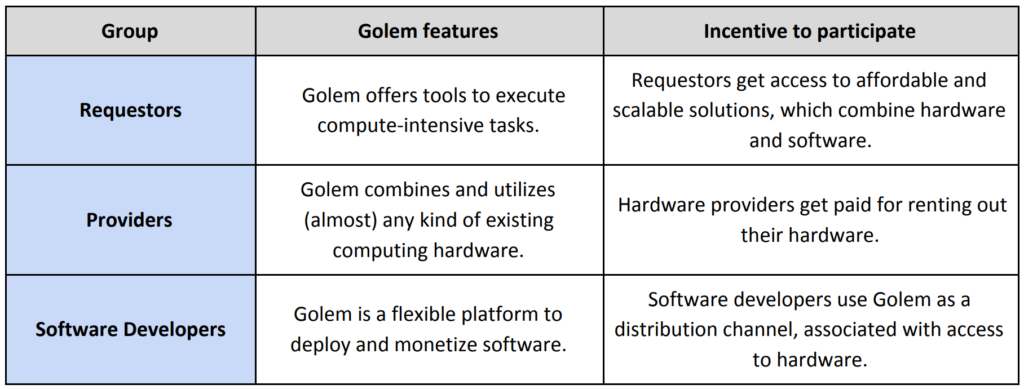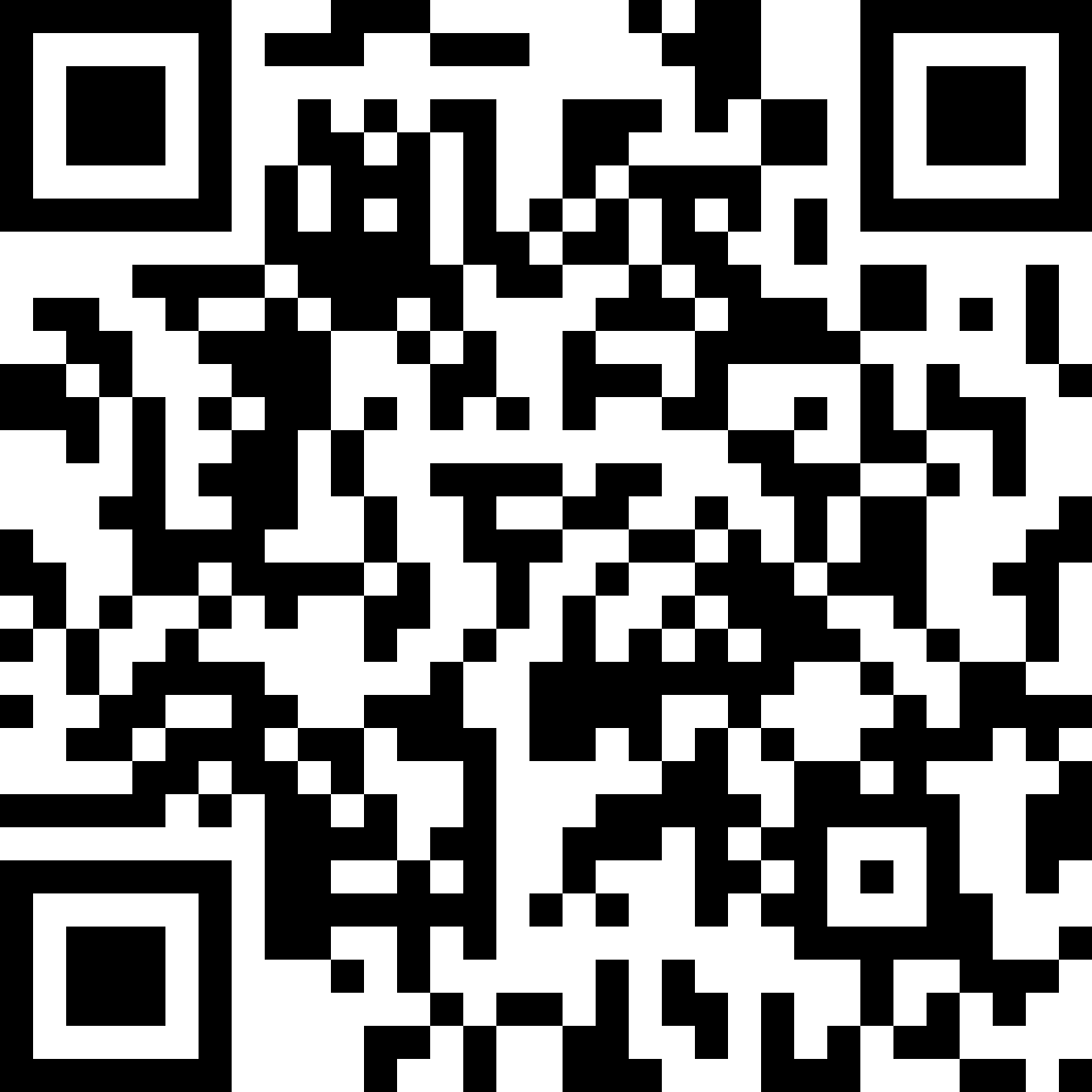In Jewish folklore, a Golem is a magical being which is made up entirely of inanimate matter. It’s not too big of a leap to understand why a network comprising an ethereal web of connected computers would carry the same name.
Similarly to Golems, supercomputers spark the imagination. Whether it’s in E.M Forsters excellent “The Machine Stops”, “The Hitchhiker’s Guide to the Galaxy”, or even in “2001 a Space Odyssey”, supercomputers seemingly open up a whole world of new possibilities.
The Golem Network is the exciting next step in the long history of supercomputers. But what is the Golem Network and how does it work?
What is Golem?
Golem is the first decentralized supercomputer. It achieves this by connecting computers in a peer-to-peer network, allowing users to harness the computational power of their peers. As a result, users performing highly complex tasks – like 3D rendering, or machine learning for example – can rent the power of the network to complete the task.
This is incredibly exciting because it effectively removes barriers to long-standing, resource-intensive tasks. Up until now, the resources required to run effective machine learning algorithms, for example, have been far too intensive for a hobbyist to justify. Now that computational power can easily be rented on the Golem network, this is no longer the case. It goes without saying that opening up a field as promising as machine learning to thousands of enthusiasts, who would otherwise have been excluded, will benefit all of us in the long run.
But it would be wrong to assume that the effects of Golem will only be felt by the scientific and research communities. To illustrate this point we can think of the huge gulf in quality when it comes to special effects in small, private film productions compared to big blockbusters (see Birdemic). This is because Computer Generated Imagery (CGI) requires expensive hardware and resource-intensive software, often beyond the scope of smaller production companies. With the help of Golem, low budget productions could generate high quality CGI for a fraction of the price.
In short, there are a number of fields and industries which have been traditionally dominated by corporations, simply because they have access to the most resources. If Golem is successful, it will not only make these industries accessible to thousands of individuals and companies, but it will also be providing the infrastructure for something bigger.
So far we have described Golem as an Infrastructure-as-a-Service, but that is not the whole story. Golem is equally a Platform-as-a-Service, allowing members to send transactions to each other, and developers to deploy software on. The advantages of deploying software on a platform which has integrated payments, and almost infinite scalability are profound but this will not become a reality until further down the line.
As you can tell Golem offers a number of very exciting possibilities, and this chart helps us to illustrate these more clearly.

What is Golem’s vision?
At this point, it is clear that if Golem is successful it will fundamentally change not only industries but behaviors as well. Indeed, Golem doesn’t simply want to help people render CGI effects, or run complex machine learning algorithms. Instead, it wants to ring in a new age of decentralization.
In the whitepaper this is referred to as Web 3.0, a decentralized network allowing users to securely and directly exchange content without the permission of a middleman. The removal of middlemen was a priority for Satoshi Nakamoto as well and formed the backbone of his seminal whitepaper.
Golem’s vision goes far beyond payments and seeks to redefine the way we use and experience the internet. This is where we encounter the first significant problem, as Golem currently runs on the Ethereum blockchain.
As was evidenced by the Cryptokitties fiasco, Ethereum has significant scalability issues, limiting the number of transactions that can be processed per second. With Golem’s lofty vision in mind, it is hard to anticipate Ethereum’s mainnet ever achieving the bandwidth required to put it into action.
Unless Ethereum moves to a much more scalable Proof-of-Stake model, or Golem launches its own high throughput blockchain, this vision will never come to fruition.
What is the Golem Network Token (GNT)?
For an ecosystem as comprehensive as Golem’s it makes sense to have a proprietary token. No wonder then, that the Golem Network Token is a crucial part of both existing and planned network features.
The most important function is currently as a payment method from requesters to providers. This means that users who wish to rent computing power on the network, are required to pay for those resources using GNT.
In terms of Golem’s roadmap, we are currently in the “Brass Golem” stage. As a result, key features like the Application Registry, or the Transaction Framework are not yet live. Once these are released they will incorporate GNT in some way as well.
Interestingly, GNT is pre-mined, meaning the total supply is already available and capped at 1 billion. Considering how pivotal the token is to the performance of a network with seemingly infinite scale, it is surprising to see the number of tokens capped at a relatively low amount.
Similarly, ambitious projects like Ethereum don’t have a hard cap, resulting in a potentially infinite supply. What this means, is that the number of available tokens can easily keep pace with increasing adoption.
In the case of Golem, we might see one of the problems inherent in utility tokens come to light sooner rather than later: The more utility a token has, the more expensive it can become. But as the price increases, the willingness to spend it decreases. As there is no chance of new GNT entering the system, the desire to spend it for utility might be compromised much earlier than on similar projects with a higher hard cap.
What is the Application Registry?
Sharing your RAM, GPU and even your wallet address with strangers comes with certain risks. Projects like SIA, Storj, Stellar and Golem find themselves facing the significant challenge of protecting network members from malicious attacks, while also facilitating peer-to-peer exchange without the need for a middleman.
The solution to this problem is often found in the form of a vetting or trust process. The irony of a decentralized, “trustless” network requiring trust will not be lost on you, but that has so far been the best solution.
In the case of Stellar for example, network members are asked to set up trustlines with Asset issuers with whom they want to interact. In the case of Golem, the plan is to vet applications and developers through the Application Registry.
More specifically, the Application Registry is designed to protect users from malicious applications running harmful code on their computers. By requiring all developers to list their project in the Application Registry, testers can vet the project and ensure it will not harm those who run it. If the application passes the vetting process, it is made available to the network. Even then, users are able to run applications in a sandbox to ensure it runs benign code.
Importantly, Golem anticipates this feature to come with the “Stone Golem” release, meaning we are still far removed from seeing it come to life.
What is the Golem Transaction Framework?
Another exciting feature accompanying the Stone Golem release is the Transaction Framework.
As mentioned in the introduction, Golem sees itself as far more than simply an Infrastructure-as-a-Service solution, but instead wants to give developers access to build powerful apps on its network.
The ecosystem and apps built on Golem will evolve beyond anything that we could predict today, which is why the team behind Golem aims to provide as much flexibility as possible. The Transaction Framework is designed to give developers the freedom to choose their own transaction model.
More specifically, the Transaction Framework is a set of boundaries within which developers can create their unique transaction model. These boundaries are:
- The application must be listed in the Application Registry
- The application must be open source or use a deterministic environment like the Ethereum Virtual Machine
- The application must have acceptance and the approval of the Golem community
- The application must use GNT to remunerate resource providers
With these four rules in mind, developers can create diverse payout schemes such as nanopayments and batching while harnessing the power of the Golem network.
Conclusion
The Transaction Framework and Application Registry are just two examples of smart and well-thought through decision making by the Golem team. The challenge of harnessing the combined power of a full-scale network of computers is huge, but the Warsaw-based team is going about it the right way so far.
Nevertheless, it would be false to say that progress has been swift. The ICO, launched in November 2016, raised $8 million and some may have hoped to see bigger steps being taken by now.
The detailed and confidence-inspiring roadmap was made public in February 2018, and we are still at stage one, nearly 10 months later. Of course, Rome wasn’t built in a day, and those with knowledge of the technical challenges Golem faces might argue that significant progress has already been made.
After all, unlike many other blockchain-powered projects, Golem has a working application. Interested parties can already download a beta version of Golem and use it on the mainnet. That in itself is an incredible achievement, and it will be exciting to watch as Golem attempts to bring decentralization to the web.





Leave a Reply